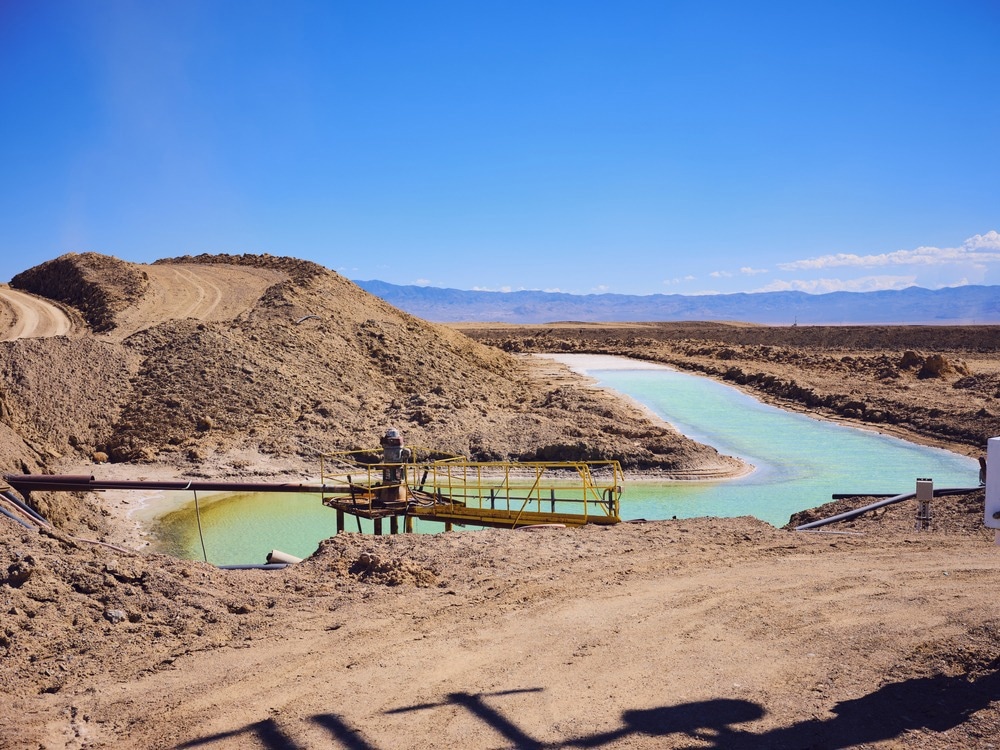A study in Nature Communications has introduced a lithium-selective thin film nanocomposite cation exchange membrane (TFN-CEM) for efficient lithium extraction from brine sources. This novel technology aims to enhance the efficiency and selectivity of lithium recovery, addressing the growing global demand for lithium in energy storage and electric vehicle applications.

Image Credit: Cavan-Images/Shutterstock.com
By providing a scalable solution, the TFN-CEM represents a significant advancement in membrane technology and a promising approach for sustainable lithium production.
The Need for Advanced Lithium Extraction Solutions
The growing demand for sustainable energy solutions has increased global interest in lithium, a key material used in batteries for electric vehicles and renewable energy storage systems.
Traditional lithium extraction from brine relies on evaporation ponds, which are resource-intensive and harmful to the environment (high water use and low recovery rates).
The direct lithium extraction (DLE) technique offers a more efficient and eco-friendlier alternative by enabling lithium recovery without evaporation. Among these methods, cation exchange membranes (CEMs) have shown their ability to selectively transport lithium ions (Li+) while blocking other cations, improving purity and yield.
However, achieving high selectivity and stability in the presence of competing ions, such as calcium (Ca2+), magnesium (Mg2+), and sodium (Na+), remains challenging. To address this, the study introduced TFN-CEM that incorporates nanosized monoclinic β-Li2TiO3 (LTO), a lithium-ion sieve, within a polymer. This design significantly enhances lithium selectivity and transport efficiency, marking a promising step forward in the sustainable extraction of lithium.
Design and Fabrication of TFN-CEM
Researchers designed and fabricated the TFN-CEM, which consists of three key layers, including a cation exchange polymer (CEP) layer, a porous polysulfone (PSf) support layer, and a polyamide (PA) skin layer embedded with lithium titanate (LTO) nanoparticles. This multi-layer structure provides high mechanical stability, effectively separates cations and anions, and ensures highly selective lithium transport.
The study used a modified interfacial polymerization technique to create a strong and defect-free interface between the LTO and PA layers, which is essential for efficient lithium-ion movement across the membrane.
The LTO nanoparticles were synthesized using a hydrothermal method, followed by amine functionalization to improve their compatibility with the PA polymer.
The resulting functionalized LTO (N-LTO) showed a high lithium-ion adsorption capacity, making it well-suited for integration into the membrane. Furthermore, multiple characterization techniques, including scanning electron microscopy (SEM), X-ray diffraction (XRD), and electrochemical impedance spectroscopy (EIS), were employed to confirm the structural integrity and functional performance of the developed membranes.
Key Findings of the Research
The experimental outcomes demonstrated that the TFN-CEM exhibited outstanding lithium selectivity, with a Li+/Na+ ratio of 13.58 and a Li+/Ca2+ ratio of 173.90, significantly higher than those of conventional cation exchange membranes. This high selectivity arises from the uniform distribution of N-LTO nanoparticles in the PA layer, which forms narrow interlayers that allow dehydrated Li+ to pass while blocking larger ions, such as sodium and calcium.
In bench-scale electrodialysis tests, the membrane maintained a high lithium flux of 41.94 mmol/h·m2. It demonstrated excellent mechanical stability and chemical robustness, remaining intact over extended cycles with no significant metal leaching or damage. It also worked well under different pH levels, making it suitable for a variety of brine sources.
Molecular dynamics simulations showed that the electric field applied during electrodialysis facilitates the movement of lithium through the LTO structure, highlighting the importance of optimizing operating conditions to maximize lithium recovery. The TFN-CEM provides a highly selective, stable, and efficient solution for practical lithium extraction.
Applications for the Lithium Mining Industry
This research has significant implications for the lithium mining industry, particularly in the extraction of lithium from geothermal brines and salt lake resources. The scalable TFN-CEM technology could enable more sustainable and less resource-intensive operations, improving lithium recovery rates and product purity while minimizing environmental impacts.
As the demand for lithium rises, advanced extraction methods like TFN-CEM will be essential to meet market needs. The technology can be integrated into existing operations to enhance resource recovery efficiency, even in brines with high concentrations of competing ions, thereby supporting economic viability and sustainability goals. TFN-CEM closely aligns with environmental regulations by reducing water use and chemical inputs and represents a significant step toward greener and more efficient lithium extraction.
Conclusion and Future Directions
The TFN-CEM represents a major advancement in lithium extraction technology. It offers a sustainable and efficient alternative to conventional, resource-intensive methods. Its high selectivity, stability, and scalable fabrication make it useful for improving lithium recovery from brine sources.
Future work should focus on long-term performance in real-world mining operations, including membrane fouling, scaling, and efficiency under different brine compositions. Exploring TFN-CEM integration with existing extraction systems and optimizing its fabrication and production could further enhance both efficiency and sustainability.
Overall, this study highlights the potential of membrane technologies to transform lithium extraction and support more sustainable mining practices, helping meet the global demand for lithium.
Journal Reference
Feng, Y., &. et al. (2025, September). A rationally designed scalable thin film nanocomposite cation exchange membrane for precise lithium extraction. Nat Commun 16, 8618 (2025). DOI: 10.1038/s41467-025-63660-3, https://www.nature.com/articles/s41467-025-63660-3
Disclaimer: The views expressed here are those of the author expressed in their private capacity and do not necessarily represent the views of AZoM.com Limited T/A AZoNetwork the owner and operator of this website. This disclaimer forms part of the Terms and conditions of use of this website.